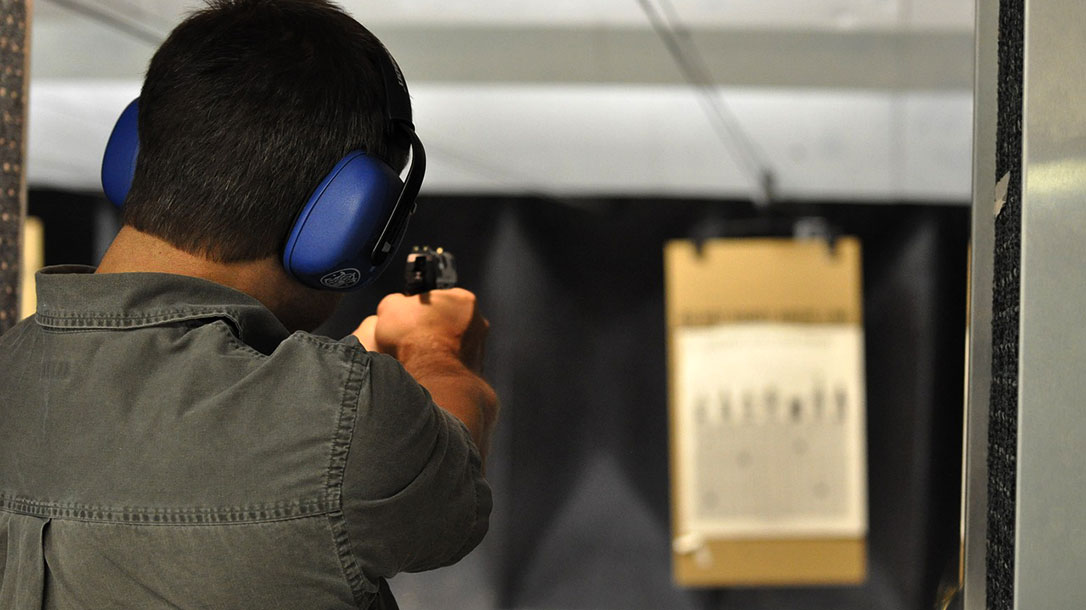Ideally, you live in a state where constitutional carry is the rule of the land. However, you may live in a state which requires you to obtain a carry permit for your self-defense handgun. Either way, there is no denying that more and more individuals are seeking out training, like a concealed carry class. This training may come in many forms from a variety of instructors. But here, we will outline a wide array of topics that you may expect to cover in your course.
A Concealed Carry Class Should Begin with the Basics of Safe Firearm Handling
As with all courses, regardless of the discipline, firearms safety is of utmost importance. Always keep the muzzle in a safe direction. Keep your finger off the trigger until you are ready to shoot. Do not load until you are ready to shoot.
You may even hear a fourth rule tacked on, and that is to know your target and what lies beyond it. This rule ties into rule number one, with some special considerations when it comes to using a gun for self-defense and home defense purposes.
Advertisement — Continue Reading Below
Your instructor must stress the importance of reassessing what “safe direction” means in your unique situation. For example, in home defense scenarios. Do you live in a single-story home? Apartment complex? Are you in the basement? Is your child’s bedroom across the hall?
Understanding Your Firearm
A gun does you no good if you have zero clue about how it works. Knowing how to lock the slide back on a handgun, release the magazine, gain access to a revolver cylinder and more are just a few of the many things there are to know concerning firearm function.
Additionally, knowing how your gun functions will assist in the event of malfunctions. Not to mention breaking the firearm down for cleaning.
Advertisement — Continue Reading Below
Speaking of function, you will typically also have a portion of your lesson dedicated to ammunition function as well. Important components such as the primer, headstamp, case, bullet, and more will be explained. Likewise, you will learn what exactly happens when you squeeze the trigger on your handgun.
Speaking of ammunition, the differences between target ammunition and that used for self-defense will be explained. Correspondingly, they will/should discuss how to match up what specific ammunition your gun is designed to shoot.
Learning Proper Defensive Shooting Skills
While the tactics used in a defensive scenario differ greatly from those used while plinking at the range, it is still important that you know the basics. Sight alignment, sight picture, respiratory pause, trigger squeeze, and follow-through all have an impact on where your shots will land on the intended target.
Advertisement — Continue Reading Below
When presented with a life-or-death scenario, fine motor skills go out the window, adrenaline kicks in, and you may experience tunnel vision. All these factors and more are especially important to understand and even simulate in your training regimen.
Proper stance and grip are essential as well. Not only to assist in maintaining control over your gun but also in how to mitigate felt recoil, differences in grips when it comes to revolvers -vs.- semiautomatics, and more.
Keeping Your Firearms Away from Unauthorized Users
Gone are the days of tossing your handgun in the bedside table and calling that state of “out of sight, out of mind” a safe storage solution. Technology has advanced, and we now have countless options for safe storage both in the home and while traveling.
Advertisement — Continue Reading Below
Options such as trigger guard locks, action locks, standard key access safes, biometric safes, and more will be discussed. As well as the pros and cons of each type.
In addition to safe storage while at home, the topic of holsters and how to carry them safely while out and about will also be discussed. Terms such as IWB (inside the waistband) -vs- OWB (outside the waistband) will be explained and potentially demonstrated. Likewise, various carrying positions, such as appendix, shoulder carry, and more, will be discussed.
The Laws Surrounding Use of Deadly Force
Laws pertaining to the use of deadly force will most likely be discussed at great length. As well as the importance of securing a lawyer well-versed in gun law before ever needing one. Of course, this is a call you hope never to have to make. But it is always better to be well-prepared, heaven forbid before the need arises.
Advertisement — Continue Reading Below
Other topics, such as the importance of situational awareness, will be addressed, as well as topics covering conflict de-escalation, conflict management, and similar strategies to help prevent an unfortunate scenario where a gun must be drawn in self-defense.
There are many areas where you cannot carry firearms, sometimes referred to as “sensitive locations,” and you must know where these places are. Examples of sensitive places may be areas such as the post office, hospitals, and various government buildings. Likewise, each state has its own concealed carry laws, and it is important to know where you can carry on a road trip.
Live Fire Training
Last but not least, every concealed carry class will typically contain live fire training where you will be able to put all that you learned to the test. Hopefully, they will catch any bad habits before they get cemented in.
Advertisement — Continue Reading Below
Speaking of tests, you may also have a written exam after your course. Following your test, you will most likely be presented with a completion certificate.
CCW courses may seem daunting at first, especially to a new gun owner. But rest assured that signing up for and attending such a course is a great way to work towards becoming a responsible gun owner.
























